
The Enchanting Istrian Peninsula: Croatia's Hidden Gem
Discover the Istrian Peninsula in Croatia: A blend of historical charm, stunning coastlines, and culinary delights, perfect for an unforgettable travel experience.
Nestled in the northern Adriatic Sea, the Istrian Peninsula is a treasure trove of natural beauty, rich history, and cultural charm. This heart-shaped land is a must-visit for those who seek a blend of serene landscapes and vibrant coastal towns. From its rolling vineyards and olive groves to its pristine beaches and azure waters, Istria offers a diverse range of experiences for every type of traveler. The peninsula is dotted with picturesque medieval towns such as Rovinj, Pula, and Motovun. Rovinj, with its narrow cobblestone streets and colorful houses, exudes a romantic atmosphere that is perfect for evening strolls. Pula, on the other hand, is home to one of the best-preserved Roman amphitheaters, where history comes alive through various events and concerts. The hilltop town of Motovun offers stunning panoramic views and is famous for its truffles, making it a haven for food enthusiasts. Istria's coastline is blessed with crystal-clear waters and hidden coves, ideal for swimming, snorkeling, and sailing. The Brijuni National Park, an archipelago of 14 islands, is a paradise for nature lovers and history buffs alike. Here, you can explore ancient Roman ruins, lush gardens, and even spot some exotic wildlife. Inland, the region's fertile soil produces excellent wines and olive oils, which you can sample at local wineries and farms. The hospitality of the Istrian people, combined with their delicious cuisine, ensures that every visitor feels welcomed and well-fed.
Local tips in Istrian Peninsula
- Visit in the shoulder seasons (spring or fall) to avoid crowds and enjoy pleasant weather.
- Rent a car to explore the inland villages and scenic countryside at your own pace.
- Don't miss trying the local truffles, especially in Motovun, a town renowned for its truffle cuisine.
- Pack comfortable walking shoes for exploring the cobblestone streets and hilly terrains of towns like Rovinj and Motovun.
- Bring a swimsuit and snorkel gear to enjoy the clear waters and hidden beaches along the coastline.
The Enchanting Istrian Peninsula: Croatia's Hidden Gem
Nestled in the northern Adriatic Sea, the Istrian Peninsula is a treasure trove of natural beauty, rich history, and cultural charm. This heart-shaped land is a must-visit for those who seek a blend of serene landscapes and vibrant coastal towns. From its rolling vineyards and olive groves to its pristine beaches and azure waters, Istria offers a diverse range of experiences for every type of traveler. The peninsula is dotted with picturesque medieval towns such as Rovinj, Pula, and Motovun. Rovinj, with its narrow cobblestone streets and colorful houses, exudes a romantic atmosphere that is perfect for evening strolls. Pula, on the other hand, is home to one of the best-preserved Roman amphitheaters, where history comes alive through various events and concerts. The hilltop town of Motovun offers stunning panoramic views and is famous for its truffles, making it a haven for food enthusiasts. Istria's coastline is blessed with crystal-clear waters and hidden coves, ideal for swimming, snorkeling, and sailing. The Brijuni National Park, an archipelago of 14 islands, is a paradise for nature lovers and history buffs alike. Here, you can explore ancient Roman ruins, lush gardens, and even spot some exotic wildlife. Inland, the region's fertile soil produces excellent wines and olive oils, which you can sample at local wineries and farms. The hospitality of the Istrian people, combined with their delicious cuisine, ensures that every visitor feels welcomed and well-fed.
When is the best time to go to Istrian Peninsula?
Iconic landmarks you can’t miss
Brijuni National Park
Explore Brijuni National Park: A stunning Croatian gem blending nature, history, and wildlife on a picturesque archipelago.

Temple of Augustus
Explore the Temple of Augustus in Pula, an ancient Roman marvel surrounded by vibrant culture and history, perfect for every tourist.

Jama - Grotta Baredine
Explore Grotta Baredine: A Stunning Underground Cave in Istria with Breathtaking Formations and Unique Wildlife.
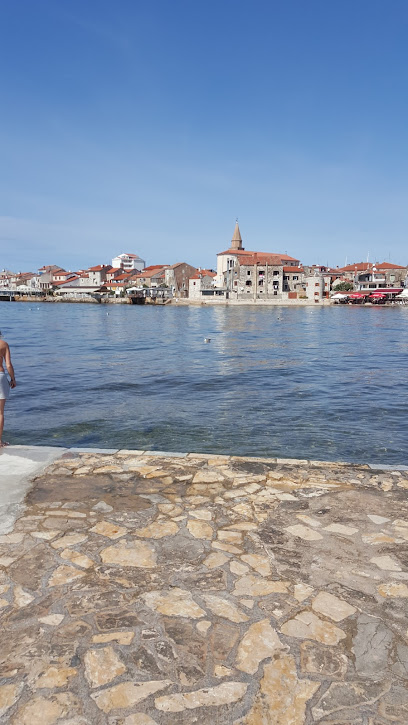
Euphrasian Basilica
Discover the breathtaking Euphrasian Basilica in Poreč, a UNESCO World Heritage site showcasing stunning Byzantine mosaics and rich historical significance.

Zarečki Krov Waterfall
Explore the hidden beauty of Zarečki Krov Waterfall, a serene natural oasis in Istria, Croatia, perfect for nature lovers and adventure seekers.

Dvigrad ruins
Discover the enchanting Dvigrad ruins in Istria, where history and breathtaking landscapes converge for an unforgettable experience.

Fort Punta Christo
Discover the captivating history and breathtaking views at Fort Punta Christo, a unique fortress and cultural hotspot near Pula, Croatia.

Historical and Maritime Museum of Istria
Explore the Historical and Maritime Museum of Istria, where Pula's rich maritime heritage and culture come to life through fascinating exhibits and artifacts.
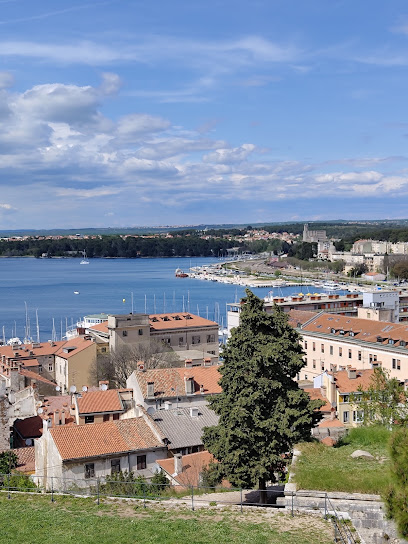
Beach Njive
Discover the tranquility of Beach Njive in Premantura, Croatia, where crystal-clear waters and stunning landscapes await every visitor.

Mosaic The Punishment of Dirce
Discover the stunning artistry and historical significance of the Mosaic The Punishment of Dirce in Pula, Croatia, a must-see for history and art lovers alike.

Glavani Park
Experience the thrill of adventure sports at Glavani Park, Croatia's premier amusement park, perfect for families and thrill-seekers alike.
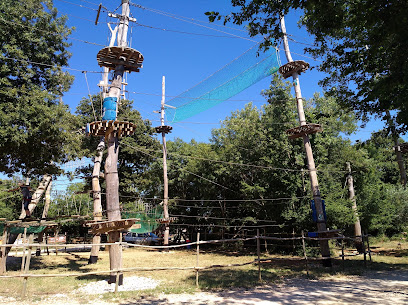
Festinsko kraljevstvo
Discover the beauty and culture of Festinsko kraljevstvo in Žminj, Croatia, where nature and tradition come together in a mesmerizing tourist attraction.
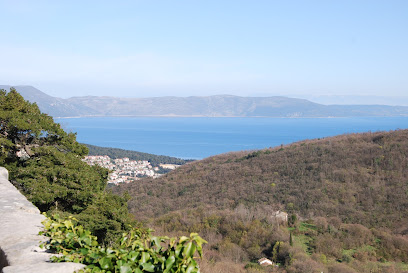
Cathedral of the Assumption of the Blessed Virgin Mary
Discover the majestic Cathedral of the Assumption of the Blessed Virgin Mary in Pula, a stunning blend of history, architecture, and spirituality in Croatia.

Kozlović Winery
Discover the rich heritage of Istrian winemaking at Kozlović Winery, where tradition meets exquisite taste in a breathtaking setting.

The Istrian House
Experience authentic Istrian flavors at The Istrian House in Poreč, a culinary destination that celebrates local cuisine and hospitality.

Unmissable attractions to see
Aquarium Pula
Explore Aquarium Pula, a stunning fortress-turned-aquarium showcasing the Adriatic's rich marine biodiversity in a captivating historical setting.

Aquapark Istralandia
Experience the thrill of Aquapark Istralandia, Croatia's premier water park, with exciting slides and family-friendly fun in a stunning setting.

Jama - Grotta Baredine
Discover the stunning Grotta Baredine in Istria, where nature's artistry meets rare biodiversity in a captivating underground adventure.

Church of Mary of God of Trsat
Discover the serene beauty and rich history of the Church of Mary of God of Trsat, a treasured pilgrimage site in Rijeka, Croatia.

Historical and Maritime Museum of Istria
Discover Istria's maritime legacy and rich history at the Historical and Maritime Museum of Istria in Pula, a must-visit for every traveler.

Pazinska jama - Speleo adventure
Experience the breathtaking underground beauty of Pazinska Jama, a must-visit speleo adventure in the heart of Croatia's stunning landscapes.
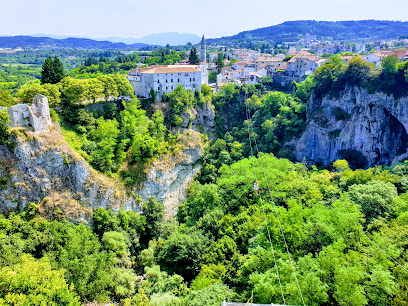
Pazin Castle
Explore Pazin Castle, a historical gem in Istria, featuring stunning views, captivating exhibits, and a rich tapestry of local history.

Glavani Park
Discover the thrill of adventure at Glavani Park, Croatia's top destination for excitement and fun for the whole family.

Aquarium Poreč
Experience the marine marvels at Aquarium Poreč, where education and entertainment unite for an unforgettable adventure in the Adriatic.

Festinsko kraljevstvo
Explore the enchanting Festinsko Kraljevstvo, a breathtaking cave attraction in Žminj, Croatia, where nature's beauty and adventure await every visitor.

Špilja Mramornica - Grotta del Marmo
Explore the captivating Grotta del Marmo in Brtonigla, Croatia, and uncover nature's exquisite marble formations in this historical landmark.

Špilja Mramornica - Grotta del Marmo
Explore the enchanting Špilja Mramornica, a geological marvel in Brtonigla, Croatia, showcasing stunning marble formations and rich historical significance.

Kaštel Petrapilosa
Explore Kaštel Petrapilosa in Zonti, Croatia: A captivating historical castle and archaeological museum rich in culture and stunning landscapes.

Waterfall Butori
Discover the enchanting Waterfall Butori in Šterna, Croatia - a serene escape into nature's breathtaking beauty and tranquility.

Istria Adventure
Experience the thrill of adventure sports and family fun at Istria Adventure, Pula's top destination for outdoor excitement in Croatia.

Essential places to dine
Restaurant Viking
Experience Mediterranean flavors at Restaurant Viking by Limski Kanal – where every meal is a journey through taste.
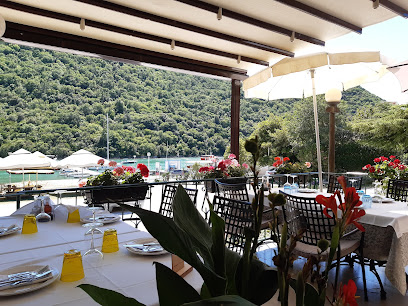
Rovinj Restaurant - La Puntulina
Discover exquisite seafood dishes with breathtaking Adriatic views at La Puntulina, Rovinj's top culinary destination.

Restaurant Ferali
Experience authentic Croatian cuisine at Restaurant Ferali in Štrmac – where every dish tells a story of tradition and flavor.

KONOBA MONDO
Discover authentic Istrian cuisine at Konoba Mondo in Motovun - a culinary gem offering delicious local dishes in a charming atmosphere.

Konoba Dolina
Discover authentic Istrian cuisine at Konoba Dolina in Gradinje – where every meal tells a story of tradition and flavor.
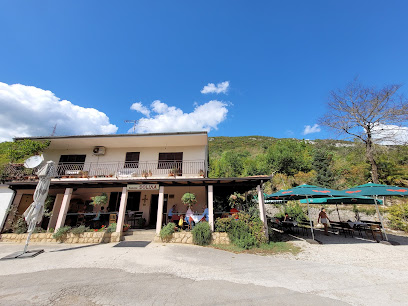
Kantina Restaurant
Discover authentic Croatian cuisine at Kantina Restaurant in Pula – where local flavors meet a charming atmosphere.

Konoba aba
Discover the heart of Istrian cuisine at Konoba aba in Poreč - where tradition meets flavor in every dish.

Konoba Malo selo
Experience authentic Istrian cuisine at Konoba Malo Selo – where family-friendly dining meets traditional flavors in a cozy atmosphere.

Rustic Gourmet Veruda
Discover Rustic Gourmet Veruda: A Culinary Haven in Pula Offering Exquisite Mediterranean Cuisine and Authentic Istrian Flavors.

Kvarner
Discover Kvarner in Labin - A gastronomic haven offering exquisite Mediterranean dishes with breathtaking Adriatic views.

Restaurant&Villa Morgan
Discover authentic Istrian cuisine at Restaurant & Villa Morgan in Brtonigla – where family-friendly dining meets stunning landscapes.

Konoba Istriana
Experience authentic Istrian cuisine at Konoba Istriana, where tradition meets flavor in a cozy setting near Pula.

Rendez-vous
Experience authentic Croatian cuisine at Rendez-vous in Pula, where every dish tells a story of local flavors and culinary artistry.

Konoba Stari podrum
Experience authentic Istrian cuisine at Konoba Stari Podrum in Merišće - where tradition meets taste in every dish.

Restaurant Zigante
Discover exquisite Istrian cuisine at Restaurant Zigante in Livade, where every dish is a celebration of local flavors and stunning scenery.

Markets, malls and hidden boutiques
Max City
Experience the vibrant shopping scene at Max City, Pula's largest mall, offering a blend of local and international brands, dining, and entertainment.

Riva Mall
Discover the vibrant shopping scene at Riva Mall in Poreč, where local charm meets international brands in a modern setting.

Galerija Poreč
Experience the best of shopping, dining, and entertainment at Galerija Poreč, a vibrant mall in the heart of Croatia.

Shopping Center Umag
Discover an exciting shopping experience at Shopping Center Umag, featuring diverse shops, delightful dining, and a vibrant atmosphere in Croatia.

Miro Tartufi
Experience the rich flavors of Motovun at Miro Tartufi, your go-to destination for exquisite truffles and local gourmet products.

LaCop Centar
Discover the ultimate shopping experience in Poreč at LaCop Centar, where fashion meets technology and local culture thrives.

Nothing to Sea
Explore the creative spirit of Rovinj at Nothing to Sea, a unique gift shop and art gallery showcasing local ceramics and artistic treasures.

ISTRIAN HEMP SHOP - Poreč
Explore the Istrian Hemp Shop in Poreč for organic hemp products and embrace a healthier lifestyle during your travels in Croatia.

Nature Croatia
Explore Nature Croatia in Pula for unique souvenirs and local crafts that embody the spirit and culture of Croatia.

Ethno Shop
Explore authentic Croatian craftsmanship at Ethno Shop in Pula, where each unique item celebrates the region's rich cultural heritage.

Croatis souvenir & gift shop
Explore the charm of Croatia with unique gifts and souvenirs at Croatis Souvenir & Gift Shop in Rovinj.

Deachrie - Croatian design concept store
Explore Deachrie – where contemporary Croatian design meets local craftsmanship in the heart of Pula.

Gift, Clothes and Souvenir Shop
Explore an array of unique souvenirs, clothing, and gifts that capture the essence of Premantura's rich culture and heritage.

PROSTOR Croatian Design Store
Explore the essence of Croatian design at PROSTOR, a fashion accessories store in Rovinj that celebrates local craftsmanship and creativity.

Zigante tartufi shop Motovun
Discover the exquisite world of truffles at Zigante Tartufi Shop in Motovun, Croatia, a gourmet grocery store celebrating Istrian culinary heritage.

Essential bars & hidden hideouts
The Shipyard Pub
Experience the nautical charm and vibrant atmosphere of The Shipyard Pub in Pula, where local flavors and great drinks meet.
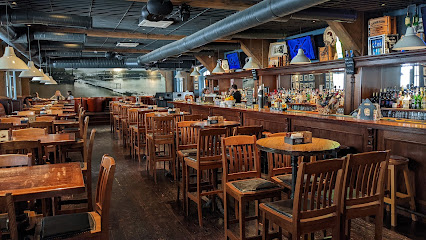
Old City Bar Pula
Discover the vibrant nightlife of Pula at Old City Bar, featuring a beer garden, cocktail selections, and a lively dance scene.

Havana Rovinj Cocktail Bar
Discover the vibrant Havana Rovinj Cocktail Bar, where unique cocktails and stunning waterfront views create an unforgettable experience in Rovinj.
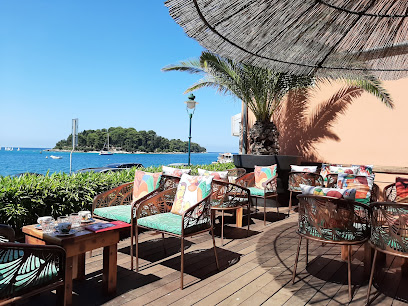
Amore Bar
Discover Amore Bar in Novigrad - where craft cocktails and local wines meet stunning views and a cozy atmosphere.
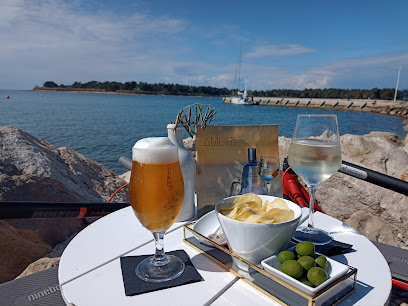
Rock Bar Mimoza
Experience the lively atmosphere at Rock Bar Mimoza in Pula, where cocktails and camaraderie create unforgettable nights under the stars.

Caffe Bar XL
Discover the vibrant nightlife of Rovinj at Caffe Bar XL, where exceptional drinks and stunning views create unforgettable moments.

Dog Dreams Beach and Bar
Experience the ultimate beachside relaxation at Dog Dreams Beach and Bar in Novigrad, where stunning views meet delightful flavors.

Valentino Cocktail & Champagne Bar
Experience the charm and luxury of Valentino Cocktail & Champagne Bar in Rovinj, where exquisite drinks meet stunning views.

Bounty
Experience the vibrant nightlife of Pula at Bounty, a lively bar offering delicious cocktails and a welcoming atmosphere.

Mulini Beach Bar
Discover the idyllic charm of Mulini Beach Bar in Rovinj, where breathtaking views meet exquisite drinks and local cuisine.

Boca Wine Bar
Discover the rich flavors of Croatia at Boca Wine Bar in Pula, where fine wines and a cozy atmosphere await every visitor.

Enoteca Istriana
Enoteca Istriana: Your gateway to the finest Istrian wines and local delicacies in the heart of Pula.
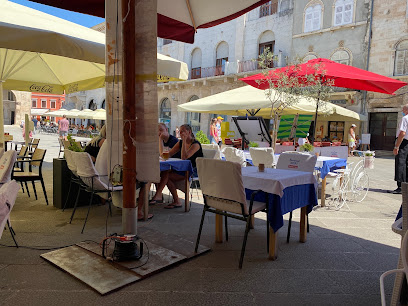
ItIstria Wine Bar and Cafe
Discover the enchanting flavors of Istria at ItIstria Wine Bar and Cafe in Umag, where local wines and gourmet cuisine await.
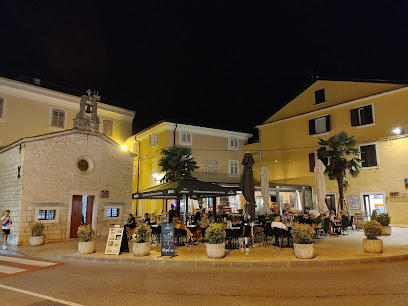
Weiße Bar
Discover the vibrant atmosphere of Weiße Bar in Rovinj, where local flavors and stunning views create the perfect getaway for every tourist.

EPULON BAR
Discover the lively ambiance and exquisite drinks at Epulon Bar in Poreč, Croatia - the perfect spot for nightlife enthusiasts.

Local Phrases about Istrian Peninsula
-
- HelloBok
[Bohk] - GoodbyeDoviđenja
[Dovee-jen-ya] - YesDa
[Dah] - NoNe
[Neh] - Please/You're welcomeMolim
[Moh-leem] - Thank youHvala
[Hva-la] - Excuse me/SorryOprosti
[Oh-pros-tee] - How are you?Kako si?
[Kah-koh see] - Fine. And you?Dobro. A ti?
[Doh-bro. Ah tee] - Do you speak English?Govoriš li engleski?
[Go-vo-reesh lee eng-les-kee] - I don't understandNe razumijem
[Neh rah-zoo-mee-yem]
- HelloBok
-
- I'd like to see the menu, pleaseMogu li vidjeti meni, molim?
[Moh-goo lee vee-dyeh-tee meh-nee, moh-leem] - I don't eat meatNe jedem meso
[Neh ye-dehm meh-so] - Cheers!Živjeli!
[Zhee-vyeh-lee] - I would like to pay, pleaseŽelio bih platiti, molim
[Zheh-lyoh bee pla-tee-tee, moh-leem]
- I'd like to see the menu, pleaseMogu li vidjeti meni, molim?
-
- Help!Pomoć!
[Poh-mohtch] - Go away!Idi odavde!
[Ee-dee oh-dahv-deh] - Call the Police!Pozovi policiju!
[Poh-zo-vee po-lee-tsee-yoo] - Call a doctor!Pozovi doktora!
[Poh-zo-vee dohk-toh-rah] - I'm lostIzgubio/la sam se
[Eez-goo-byoh/lah sahm se] - I'm illBolestan/sna sam
[Boh-leh-stahn/snah sahm]
- Help!Pomoć!
-
- I'd like to buy...Želim kupiti...
[Zheh-leem koo-pee-tee] - I'm just lookingSamo razgledavam
[Sah-moh raz-gle-dah-vam] - How much is it?Koliko košta?
[Koh-lee-koh kosh-tah] - That's too expensiveTo je pre-sku-po
[Toh yeh preh-skoo-poh] - Can you lower the price?Možete li spustiti cijenu?
[Moh-zheh-teh lee spoos-tee-tee tsee-yeh-noo]
- I'd like to buy...Želim kupiti...
-
- What time is it?Koliko je sati?
[Koh-lee-koh yeh sah-tee] - It's one o'clockJedan je sat
[Yeh-dahn yeh saht] - Half past (10)Pola (deset)
[Poh-lah (deh-set)] - MorningJutro
[Yoo-troh] - AfternoonPopodne
[Poh-pohd-neh] - EveningVečer
[Veh-chehr] - YesterdayJučer
[Yoo-cher] - TodayDanas
[Dah-nahs] - TomorrowSutra
[Soo-trah] - 1Jedan
[Yeh-dahn] - 2Dva
[Dvah] - 3Tri
[Tree] - 4Četiri
[Cheh-tee-ree] - 5Pet
[Peh-t] - 6Šest
[Shehst] - 7Sedam
[Seh-dahm] - 8Osam
[Oh-sahm] - 9Devet
[Deh-veht] - 10Deset
[Deh-set]
- What time is it?Koliko je sati?
-
- Where's a/the...?Gdje je...
[Gdyeh yeh] - What's the address?Koja je adresa?
[Koyah yeh ah-dre-sah] - Can you show me (on the map)?Možete li mi pokazati (na karti)?
[Moh-zheh-teh lee mee poh-kah-zah-tee (nah kar-tee)] - When's the next (bus)?Kada je sljedeći (autobus)?
[Kah-dah yeh sl-yeh-deh-chee (ow-toh-boos)] - A ticket (to ....)Jednu kartu (do ....)
[Yeh-dnoo kar-too (doh)]
- Where's a/the...?Gdje je...
History of Istrian Peninsula
-
The Istrian Peninsula has a rich history dating back to ancient times. It was initially inhabited by the Histri tribe, from whom the peninsula gets its name. The Romans conquered the region in the 2nd century BC, leaving behind an array of architectural marvels. The town of Pula, in particular, boasts one of the best-preserved Roman amphitheaters in the world, the Pula Arena, which could seat up to 23,000 spectators and is still used for events today.
-
Following the fall of the Western Roman Empire, Istria came under Byzantine control in the 6th century. This era saw the construction of several significant religious buildings, including the Euphrasian Basilica in Poreč, a UNESCO World Heritage Site known for its stunning mosaics. By the 8th century, the Franks took over, leading to the spread of Christianity and the establishment of bishoprics.
-
The Republic of Venice ruled over Istria from the 13th century until the late 18th century, leaving a lasting impact on its architecture, culture, and economy. The coastal towns of Rovinj and Poreč are especially noted for their Venetian Gothic buildings, narrow cobblestone streets, and picturesque harbors. The Venetian influence is also evident in local dialects and culinary traditions.
-
After the fall of the Venetian Republic in 1797, Istria became part of the Habsburg Monarchy. This period brought about significant administrative and infrastructural changes, including the development of railways and ports. The Austro-Hungarian era also saw the rise of tourism, with the establishment of the first hotels in Opatija, making it a popular resort destination among European nobility.
-
Following World War I, the Treaty of Rapallo in 1920 awarded Istria to Italy. This period was marked by significant Italianization efforts, including the suppression of Croatian and Slovene languages and cultures. The town of Pula became a major naval base for the Italian Navy, and numerous Italian architectural styles and public works projects were introduced to the region.
-
During World War II, Istria was a battleground between Axis and Allied forces, as well as local partisan resistance. After the war, the peninsula was ceded to Yugoslavia in 1947, leading to a period of significant political and social change. The post-war era saw the emigration of many Italians and the settlement of Croats and Slovenes, reshaping the demographic landscape of the region.
-
With the breakup of Yugoslavia in the early 1990s, Istria became part of the newly independent Republic of Croatia. Today, it is one of the country's most prosperous and tourist-friendly regions, celebrated for its blend of cultural influences, historical landmarks, and natural beauty. The region has embraced its diverse heritage, promoting bilingualism in Croatian and Italian and preserving historical sites for future generations.
Istrian Peninsula Essentials
-
The Istrian Peninsula is well-connected and can be reached by air, road, and sea. The nearest international airports are Pula Airport (PUY), Rijeka Airport (RJK), and Trieste Airport (TRS) in Italy. From these airports, you can rent a car or take a bus to your destination in Istria. For those traveling by car, the A9 highway (Istrian Y) connects the peninsula with the rest of Croatia. Additionally, there are ferry services from Venice, Italy, to Pula and Rovinj.
-
Istria offers various transportation options including buses, taxis, and rental cars. Public buses operated by companies such as Brioni Pula and Autotrans connect major towns and cities. Taxis are available but can be expensive for long distances. Renting a car is a popular option for exploring the peninsula at your own pace. For a scenic experience, cycling is a great way to explore Istria’s coastal and inland routes.
-
The official currency in Croatia is the Croatian Kuna (HRK). Credit and debit cards are widely accepted in hotels, restaurants, and shops, but it’s advisable to carry some cash for smaller establishments and markets. ATMs are readily available in all major towns and tourist areas. Currency exchange services are also available at airports, banks, and exchange offices.
-
Istria is generally a safe destination for tourists. Standard safety precautions should be taken, such as avoiding poorly lit areas at night and keeping an eye on your belongings in crowded places. There are no specific high-crime areas targeting tourists, but it’s always good to stay vigilant and aware of your surroundings.
-
In case of emergency, dial 112 for immediate assistance, which connects you to all emergency services including police, medical, and fire services. Major towns have hospitals and clinics. It is highly recommended to have travel insurance that covers medical emergencies. Pharmacies, known as 'ljekarna,' are well-stocked and can provide over-the-counter medications for minor health issues.
-
Fashion: Do dress modestly, especially when visiting religious sites. Avoid wearing revealing clothing. Religion: Do respect local customs and traditions. When visiting churches, cover your shoulders and knees. Public Transport: Do be respectful and give up your seat to elderly passengers. Don’t talk loudly or eat on public transport. Greetings: Do greet people with a handshake. A friendly 'Dobar dan' (Good day) is appreciated. Eating & Drinking: Do try local delicacies and wines. Don’t refuse hospitality, as it is considered impolite.
-
To experience Istria like a local, visit the local markets where you can buy fresh produce and artisanal products. Engage with locals, as they are often friendly and willing to share stories about the region's history and culture. Don’t miss the truffle hunting tours in the Motovun forest. For a unique experience, attend one of the many local festivals, such as the Pula Film Festival or the Rovinj Batana Festival.
Trending Landmarks in Istrian Peninsula
-
Brijuni National Park
-
Temple of Augustus
-
Jama - Grotta Baredine
-
Euphrasian Basilica
-
Zarečki Krov Waterfall
-
Dvigrad ruins
-
Fort Punta Christo
-
Historical and Maritime Museum of Istria
-
Beach Njive
-
Mosaic The Punishment of Dirce
-
Glavani Park
-
Festinsko kraljevstvo
-
Cathedral of the Assumption of the Blessed Virgin Mary
-
Kozlović Winery
-
The Istrian House
Nearby Cities to Istrian Peninsula
-
Things To Do in Koper
-
Things To Do in Opatija
-
Things To Do in Izola
-
Things To Do in Portorož
-
Things To Do in Piran
-
Things To Do in Trieste
-
Things To Do in Pula
-
Things To Do in Sežana
-
Things To Do in Postojna
-
Things To Do in Nova Gorica
-
Things To Do in Ljubljana
-
Things To Do in Škofja Loka
-
Things To Do in Bohinj
-
Things To Do in Kamnik
-
Things To Do in Bled













